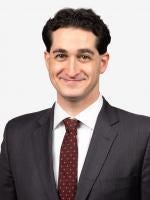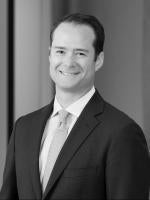For the past month, Americans have been riveted by footage of three university presidents testifying before US Congress about campus antisemitism. All three provided legalistic answers to emotional questions. The fallout was immediate.
The president of the University of Pennsylvania (Penn) resigned, followed quickly by the chair of Penn’s Board of Trustees. Harvard University’s president similarly resigned after intense criticism from alumni, elected officials, amid renewed plagiarism accusations. These universities, amongst others, have also sustained economic consequences as a result, as certain major donors have publicly pulled their support, and Congressional committees consider (1) revoking their tax-exempt status, (2) significantly increasing the rate of the endowment excise tax and (3) making these institutions ineligible for federal student aid programs.
In some ways, these dramatic events were a perfect storm: elite universities, tense geopolitics, powerful donors, and uncomfortable CSPAN footage that became irresistible media fodder.
Executive Summary
These events serve as broader warnings for higher education institutions and their leadership. As campus climates become more tense, and partisan politics become more fraught, last month’s events raise three intertwined governance issues:
- First, colleges must have well-developed policies governing student speech and conduct on their campuses.
- Second, schools must have guidelines for when and whether the school itself (though the president, administrators, or faculty) will make statements about, or take actions in response to, events occurring outside their campus.
- Third, schools must have policies governing donors’ influence on institutional decision-making.
Importantly, these policies must be supported by procedures and protocols to assure that they are regularly followed and impartially enforced.
For the most part, there are no “right” or “wrong” approaches to these complex issues. But to maintain legitimacy, colleges and universities must thoughtfully develop such policies and ensure that they are implemented consistently. Given the events of the past month, it would be prudent for schools to review their policies with an eye towards the consequences that have been so prominently on display.
Student Speech
General
Colleges have long been centers of protest. Controversial speech is nothing new. Indeed, some schools pride themselves on student bodies who engage passionately on topics of social and political change. For example, the University of Chicago and over 100 other institutions have adopted the ‘Chicago Principles,’ which endorse “free, robust, and uninhibited debate and deliberation among all members” of a campus community.
New ‘Information’ Age
Decades ago, college students (and the general public) primarily obtained information from traditional newspapers, magazines, and news reporting. However, this changed with the explosion of social media, leading to the closure of many newspapers and magazines and with prognosticators providing their opinions rather than reporting the news, all expounded by multiple disinformation sources on the internet.
Protest Parameters
Protests can create challenges for campuses. They can interfere with campus activities, disturb student life, create tension within the campus community, and sometimes promote intimidation and insecurity. Many colleges have student conduct policies designed to address the boundaries of acceptable protest, speech, and conduct.
Schools should look closely at those policies and consider whether they provide adequate guidance on the following questions:
- Registration and Approval:
- If students gather for an on-campus demonstration, must that demonstration be registered in advance?
- Must it be approved and, if so, by whom?
- What are the conditions for approval?
- Protest Boundaries:
- Are there any physical areas that are off-limits for demonstrations (e.g., classrooms, libraries, dormitories, etc.)?
- Are there any time periods that are off-limits for demonstrations (e.g., late night, final exams, etc.)?
- Protest Conduct:
- What conduct is considered beyond the boundaries of acceptable protest through threatening and intimidating conduct including actual or veiled advocacy of violence and harassment?
- Can protestors disrupt campus events?
- Can they make statements that target views of specific students or student groups?
- Can they put signage in dormitories or classrooms?
- Internet Conduct:
- If students employ social media as part of their protest, may they freely use the names and images of fellow students, faculty, or campus groups with whom they disagree?
- If not, what are the ramifications for these students?
- Remedies:
- If some students feel intimidated, uncomfortable, or targeted by protests, protesters, or other student expressions, how can those students file complaints?
- Who adjudicates those complaints?
- What punishments will be faced by those who violate these conduct policies?
Precise Policies Warranted
Many policies fail to adequately address the issues above or address them vaguely and imprecisely. Clarity and communication are key and existing relevant laws can be used to shape policies.
Schools should ensure that their policies are accessible and not hidden away in a conduct manual on an obscure website. Rather, they should be well-publicized to students during (and after) orientation, and particularly emphasized to student leaders (e.g., student government, residential hall advisors) and guest speakers. Administrators should also enforce these policies in an even-handed and uniform manner to be applied equally to all groups, causes, and protests.
It is impossible to plan for every possible protest, particularly as technologies evolve and hot-button issues change with each semester. By addressing issues like those identified above, institutions can ensure that they will not be caught completely flat-footed when situations do arise.
Institutional Speech
General
Historically, large institutions — corporations, colleges, museums — eschewed making statements that could be seen as ideological or partisan. Increasingly, however, these institutions are being pressured to take positions on current events or issues. Often, this pressure is most acute following well-publicized domestic or international events. Examples include the killing of George Floyd and the events of January 6, 2021.
The October 7, 2023 terrorist attack on Israel and the military action on Gaza impacting non-combatants, along with other actions precipitated by the foregoing, may lead to a possible wider outbreak of hostilities in the Middle East. Consequently, this will remain an ongoing issue both on and off campus for the foreseeable future.
College Statements
Such events have generated countless statements from college leaders. But these statements are inherently difficult, and rarely appease those to whom they are addressed. Campus community members often disagree with the statements’ tone or substance or identify perceived hypocrisy or favoritism when statements are made in response to one issue but not another. External constituencies, including politicians and interest groups, are likely to parse and spin these statements to promote their own perceptions and desired outcomes, using colleges as easy scapegoats.
College Statement Parameters
As colleges review their communications policies, they should consider the following questions:
- When, if ever, does an external event (i.e., domestic or international news) merit a statement from the institution?
- If a statement is warranted, who issues the statement (e.g., the president, vice president, dean)?
- What is the appropriate medium for a statement? Email? College website posting? Social media? Video?
- If an email is sent, how are the recipients determined? When should the recipients go beyond students, faculty, and staff to include alumni? When should the statement be publicly posted online (and therefore easily accessible to individuals who are unaffiliated with the school)?
- When should the school organize some type of public gathering, teach-in, or vigil in response to a tragedy outside the campus?
Chicago Trifecta
Different schools have different approaches to public statements.
One such approach is described in the 1967 Kalven Report developed by the University of Chicago. Under this model, universities should avoid commenting on public affairs or social issues. Rather, “[t]he university is the home and sponsor of critics; it is not itself the critic.” Its role is to allow students and faculty to speak freely, but not speak institutionally.
Some leaders are expressing new interest in the Kalven principles. For example, the president of Williams College recently announced a new policy “not to send out campus-wide messages about domestic or international events or even natural disasters, no matter how tragic or painful.” She explained her thinking: “Earlier in my presidency I sent out public statements about various world events. [But] I have become convinced that such communications do more harm than good. They support some members of our community in particular moments while intentionally or unintentionally leaving out others. They give some issues great visibility while leaving others unseen.”
Alternative Approaches
Other schools may prefer to adopt more flexible approaches.
For example, a school may issue statements on news events only when they directly affect the campus. Perhaps a college would not comment on natural disasters in another country but would make exceptions if students were studying abroad there or a significant portion of the school population was from that country. A school could decide not to comment on racism generally but would make an exception if a race-related incident occurred on or near campus.
There is no single answer to when a college should publicly address a particular issue, and it is exceedingly difficult to formulate such an answer in the abstract. But colleges would be wise to develop guiding principles — ideally before emergencies arise rather than in response to them. These principles, when consistently and impartially applied, can inoculate against allegations that a school is playing favorites in expressing support, condemnation, or contrition.
Faculty and Administrator Speech
General
Universities are decentralized. Beyond the president, there are many deans, officers, division heads, and faculty leaders. While decentralization can be positive in many ways, schools would benefit from guidelines outlining the various roles and responsibilities for its leaders and stakeholders in issuing (and approving) public statements.
Faculty Statement Parameters
Threshold steps in a crisis is determining whether to speak and, if so, who should speak. Assigning a primary speaker, often an institution’s president, can lessen the likelihood that other administrators release their own competing statements. Instead, others might refer inquiries back to the president’s statement and office.
This hierarchy is particularly important when the subject matter is sensitive, and the precise wording needs careful consideration. The recent conflict in the Middle East is a telling example; colleges risk significant consequences if they assign blame, express contrition, or urge restraint in an insensitive or ill-thought manner. By establishing a single lead communicator, institutions can minimize the potential for conflicting, confusing, or outright contradictory statements arising from various voices within leadership.
Policies governing faculty speech are complex.
Faculty are protected by academic freedom, meaning they are generally permitted to express their views without retaliation or punishment. Many in academia would recoil at the notion that the administration could censor faculty speech — whether that speech comes in the form of research, social media posts, or commentary to media. However, developing clear expectations for faculty can nevertheless be beneficial. For example, policies that permit faculty expression of individual viewpoints but that prohibit presentation of such expressions as representative of the institution may be a helpful guardrail.
Donor Control
General
Concerns over antisemitism have quickly become a substantial philanthropic issue. Some donors have launched public campaigns to remove university presidents. Others have taken quieter, but still firm, approaches on withholding funding until certain policy changes are made.
Related Concerns
From a governance perspective, only a nonprofit’s board and senior officers can effectuate policy changes. Nonprofits should not be seen as being subject to the control of donors. Of course, this creates tensions — especially when the donors may also serve on the school’s board. However, schools must be cautious to draw lines. Consider how your school would react to the following hypotheticals:
- A school’s largest donor announces that he will stop donating unless the board terminates the president.
- A school’s largest donor announces that she will give $10 million, but only if the president terminates a particular faculty member whose research the donor does not like.
- A donor is unhappy with the minimal support that a particular religious group is receiving on campus and donates millions of dollars on the condition that the funds be used to hire multiple spiritual leaders and fund events related to that religion — sums far beyond those that are available to other religions based upon the campus population.
- A collection of donors are unhappy with the lack of political balance in the political science department. They pool their resources and insist that the school hire a well-known conservative or liberal faculty member. Their gift would cover the cost of doing so.
- A donor makes a large gift to erect a new building on the condition that the building is named for a controversial political figure.
Possible Responses
A logical response would be to simply refuse the donors money in these types of situations.
For two reasons, this approach is challenging. Schools, even nonprofit institutions, need funds to support operations, especially with long term downward trends in potential college-age students. Most institutions do not have endless lists of major donors or unlimited financial resources. To offend such a person carries significant risks, and administrators are likely to weigh the pros and cons of working with opinionated donors.
In addition, it can be very awkward to refuse a donor’s requirement unless the school can point to a clear policy on gift acceptance. Such a policy can ensure that donors understand that the school is even-handed in its dealings with philanthropists. For example, a donation policy could prohibit donors from participating in hiring faculty, selecting specific students to receive awards, or using the donation to advance political agendas. As with speech or conduct policies, there is not an objectively proper donor policy. A good policy will establish clear parameters for donors and fundraisers alike and help avoid risks like those exemplified in recent months.
Federal Government Reaction
As an immediate response to the intently watched university president Congressional hearings, we are likely to see committee investigations of schools focusing on antisemitic activities, as well as calls for investigations into foreign donors and related lack of transparency of colleges and universities, and other nonprofits.
For instance, on January 9, the US House Committee on Education and the Workforce requested board text messages, information on Jewish enrollment trends and foreign donations from Harvard as part of an ongoing investigation. The following day, the House Committee on Ways and Means sent a similar letter to the presidents and interim presidents of Harvard, Massachusetts Institute of Technology (MIT), Penn, and Cornell University emphasizing the beneficial tax treatment conferred on these institutions such as funding from federal grants and appropriations, federal support for student loan assistance, financial benefits from being federal tax-exempt entities, and advantageous federal tax treatment of college endowments.
The beginning of a new year and Congressional session has not diminished the focus on these institutions, particularly those with large endowments, as Congress continues investigations into antisemitism at some schools, potentially looking to revoke federal aid eligibility and tax-exempt status to a wider group of colleges and universities. Congressional staffers have noted that interest in adjusting and expanding the endowment excise tax is at an all-time high amongst members of Congress.
With this heightened focus on higher education, institutions will need to evaluate their own policies and closely monitor Congressional efforts on multiple fronts in numerous committees’ jurisdiction, such as House Education and the Workforce, and Ways and Means Committees. This will be necessary whether or not institutions are currently being directly investigated.
Educators often talk about teachable moments.
The recent Congressional hearings on antisemitism provided many of these moments for university leaders. Chief among them is the importance of having well-defined policies that are evenly applied. Equally important is that those policies must be clear, communicable, and transparent for constituencies both on and off-campus.







 />i
/>i

